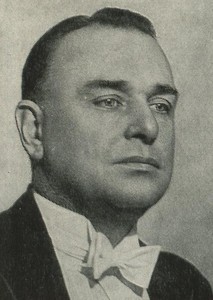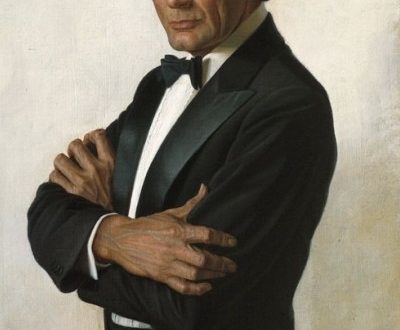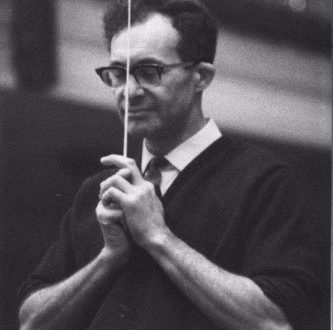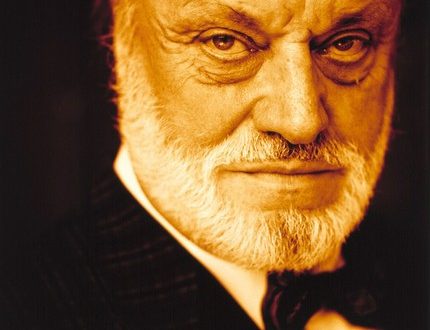
Vladimir Alexandrovich Dranishnikov |
Vladimir Dranishnikov

Honored Artist of the RSFSR (1933). In 1909 he graduated from the regency classes of the Court Singing Chapel with the title of regent, in 1916 the St. Petersburg Conservatory, where he studied with A.K. Esipova (piano), A.K. Lyadov, MO Steinberg, J. Vitol, V.P. (conducting). In 1914 he began working as a pianist-accompanist at the Mariinsky Theatre. Since 1918 conductor, since 1925 chief conductor and head of the musical part of this theater.
Dranishnikov was an outstanding opera conductor. The deep revelation of the musical dramaturgy of the opera performance, the subtle sensation of the stage, the innovation and freshness of the interpretation were combined in him with an ideal sense of balance between vocal and instrumental principles, choral dynamics – with the utmost cantilena richness of the orchestral sound.
Under the direction of Dranishnikov, classical operas were staged at the Mariinsky Theater (including Boris Godunov, in the author’s version by M. P. Mussorgsky, 1928; The Queen of Spades, 1935, and other operas by P. I. Tchaikovsky ; “Wilhelm Tell”, 1932; “Troubadour”, 1933), works of Soviet (“Eagle Revolt” Pashchenko, 1925; “Love for Three Oranges” Prokofiev, 1926; “Flame of Paris” Asafiev, 1932) and contemporary Western European composers (“Distant Ringing” by Schreker, 1925; “Wozzeck” by Berg, 1927).
Since 1936, Dranishnikov has been the artistic director and chief conductor of the Kyiv Opera Theatre; directed productions of Lysenko’s Tapac Bulba (new edition by B. N. Lyatoshinsky, 1937), Lyatoshinsky’s Shchorc (1938), Meitus’ Perekop, Rybalchenko, Tica (1939). He also performed as a symphony conductor and pianist (in the USSR and abroad).
Author of articles, musical works (“Symphonic etude” for piano with orc., vocals, etc.) and transcriptions. M.F. Rylsky dedicated the sonnet “The Death of a Hero” to the memory of Dranishnikov.
Compositions: Opera “Love for Three Oranges”. For the production of the opera by S. Prokofiev, in: Love for three oranges, L., 1926; Modern Symphony Orchestra, in: Modern Instrumentalism, L., 1927; Honored Artist EB Wolf-Israel. To the 40th anniversary of his artistic activity, L., 1934; Musical dramaturgy of The Queen of Spades, in collection: The Queen of Spades. Opera by P. I. Tchaikovsky, L., 1935.
An artist of mighty scope and ardent temperament, a bold innovator, a discoverer of new horizons in musical theater — this is how Dranishnikov entered our art. He was one of the first creators of the Soviet opera theater, one of the first conductors whose work entirely belonged to our time.
Dranishnikov made his debut at the podium while still a student during summer concerts in Pavlovsk. In 1918, having brilliantly graduated from the Petrograd Conservatory as a conductor (with N. Cherepnin), pianist and composer, he began conducting at the Mariinsky Theater, where he had previously worked as an accompanist. Since then, many bright pages in the history of this group have been associated with the name of Dranishnikov, who in 1925 became its chief conductor. He attracts the best directors to work, updates the repertoire. All spheres of musical theater were subject to his talent. Dranishnikov’s favorite works include operas by Glinka, Borodin, Mussorgsky, and especially Tchaikovsky (he staged The Queen of Spades, Iolanta, and Mazeppa, an opera which, in Asafiev’s words, he “rediscovered, revealing the agitated, passionate soul of this brilliant, juicy music, its courageous pathos, its gentle, feminine lyricism”). Dranishnikov also turned to old music (“The Water Carrier” by Cherubini, “Wilhelm Tell” by Rossini), inspired Wagner (“Gold of the Rhine”, “Death of the Gods”, “Tannhäuser”, “Meistersingers”), Verdi (“Il trovatore”, “La Traviata ”, “Othello”), Wiese (“Carmen”). But he worked with particular enthusiasm on contemporary works, for the first time showing Leningraders Strauss’s The Rosenkavalier, Prokofiev’s Love for Three Oranges, Schreker’s The Distant Ringing, Pashchenko’s Eagle’s Revolt, and Deshevov’s Ice and Steel. Finally, he took over the ballet repertoire from the hands of the aged Drigo, updating Egyptian Nights, Chopiniana, Giselle, Carnival, staging The Flames of Paris. Such was the range of activity of this artist.
Let us add that Dranishnikov regularly performed in concerts, where he especially succeeded in Berlioz’s Damnation of Faust, Tchaikovsky’s First Symphony, Prokofiev’s Scythian Suite, and works by the French Impressionists. And every performance, every concert conducted by Dranishnikov took place in an atmosphere of festive elation, accompanying events of great artistic significance. Critics sometimes managed to “catch” him on minor errors, there were evenings when the artist felt not in the mood, but no one could deny his talent in captivating power.
Academician B. Asafiev, who highly appreciated the art of Dranishnikov, wrote: “All of his conducting was “against the current”, against narrowly scholastic professional pedantry. Being, first of all, a sensitive, harmoniously gifted musician, who had a rich inner ear, which allowed him to hear the score before it sounded in the orchestra, Dranishnikov in his performance went from music to conducting, and not vice versa. He developed a flexible, original technique, entirely subordinated to plans, ideas and emotions, and not just a technique of plastic gestures, most of which are usually intended for the admiration of the public.
Dranishnikov, who was always deeply concerned about the problems of music as a living speech, that is, first of all, the art of intonation, in which the power of pronunciation, articulation, carries the essence of this music and transforms physical sound into a bearer of an idea – Dranishnikov sought to make a conductor’s hand – a conductor’s technique – to make malleable and sensitive, like the organs of human speech, so that the music sounds in performance primarily as a live intonation, fanned with emotional burning, an intonation that truthfully conveys meaning. These aspirations of his were on the same plane with the ideas of the great creators of realistic art…
… The flexibility of his “speaking hand” was extraordinary, the language of music, its semantic essence were available to him through all the technical and stylistic shells. Not a single sound out of touch with the general meaning of the work and not a single sound out of the image, out of the concrete artistic manifestation of ideas and out of live intonation — this is how one can formulate the credo of Dranishnikov the interpreter.
An optimist by nature, he sought in music, first of all, life-affirmation – and therefore even the most tragic works, even works poisoned by skepticism, began to sound as if the shadow of hopelessness had just touched them, “but at the core the eternal love of life always sang about itself” … Dranishnikov spent his last years in Kyiv, where from 1936 he headed the Opera and Ballet Theater. Shevchenko. Among his works performed here are productions of “Taras Bulba” by Lysenko, “Shchors” by Lyatoshinsky, “Perekop” by Meitus, Rybalchenko and Titsa. Untimely death overtook Dranishnikov at work – immediately after the premiere of the last opera.
L. Grigoriev, J. Platek, 1969.





